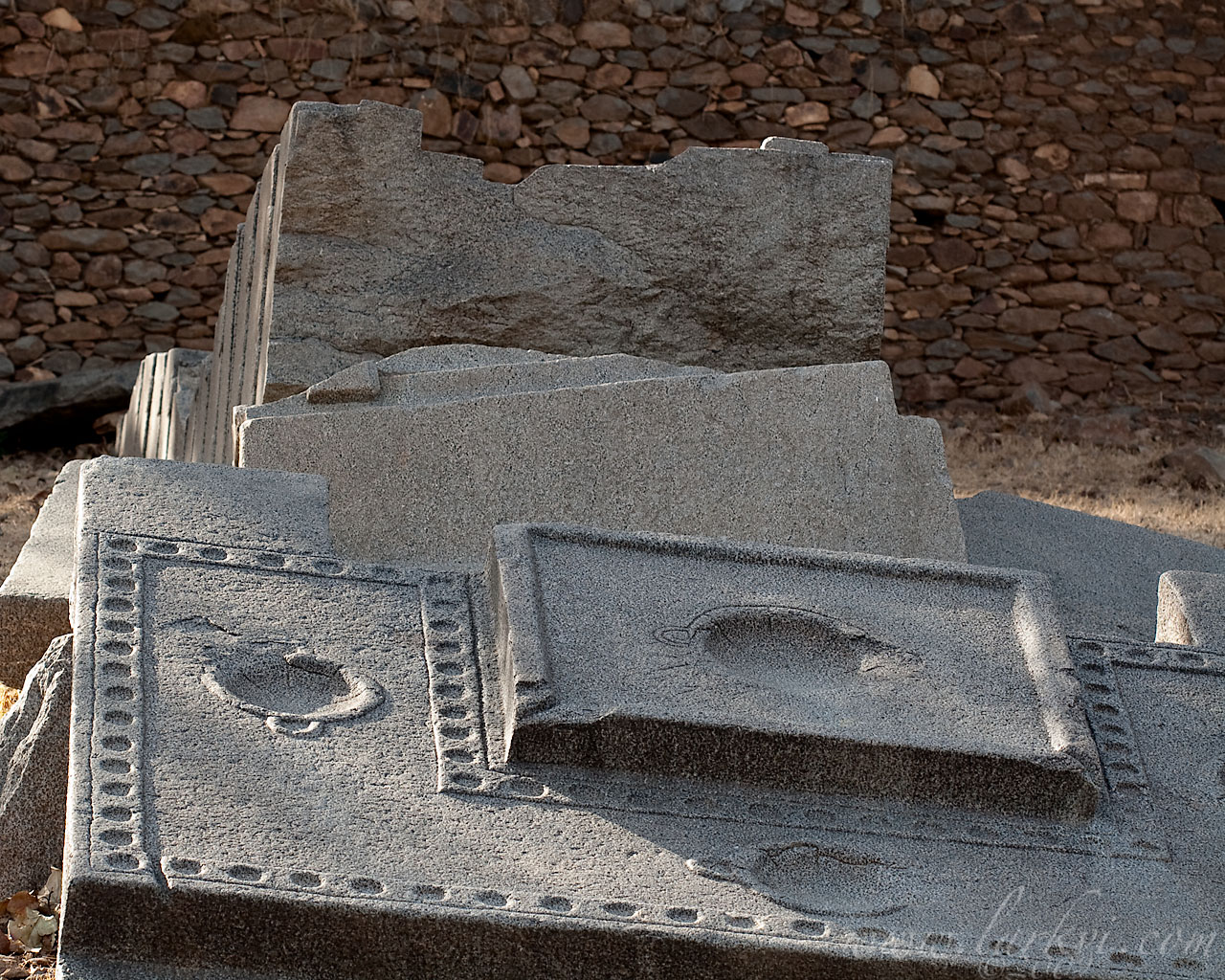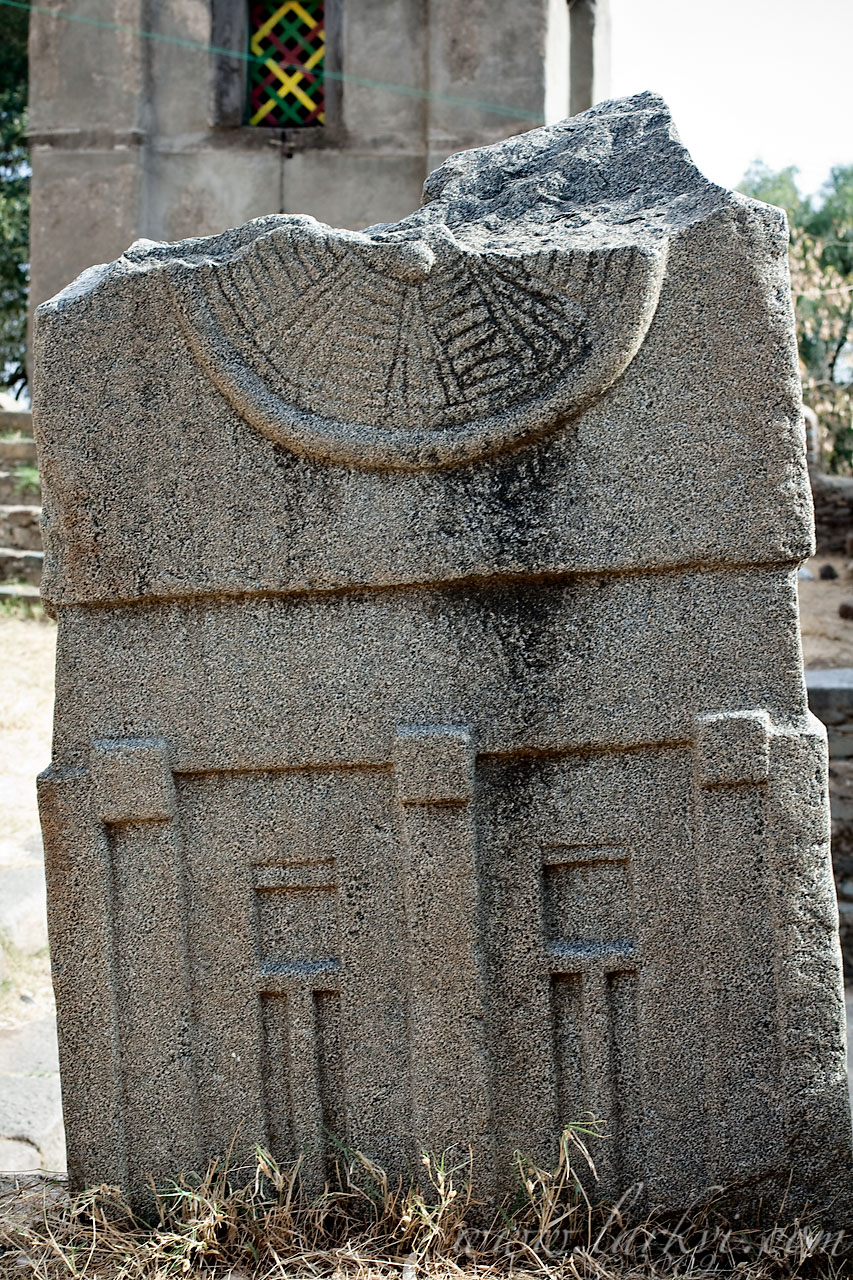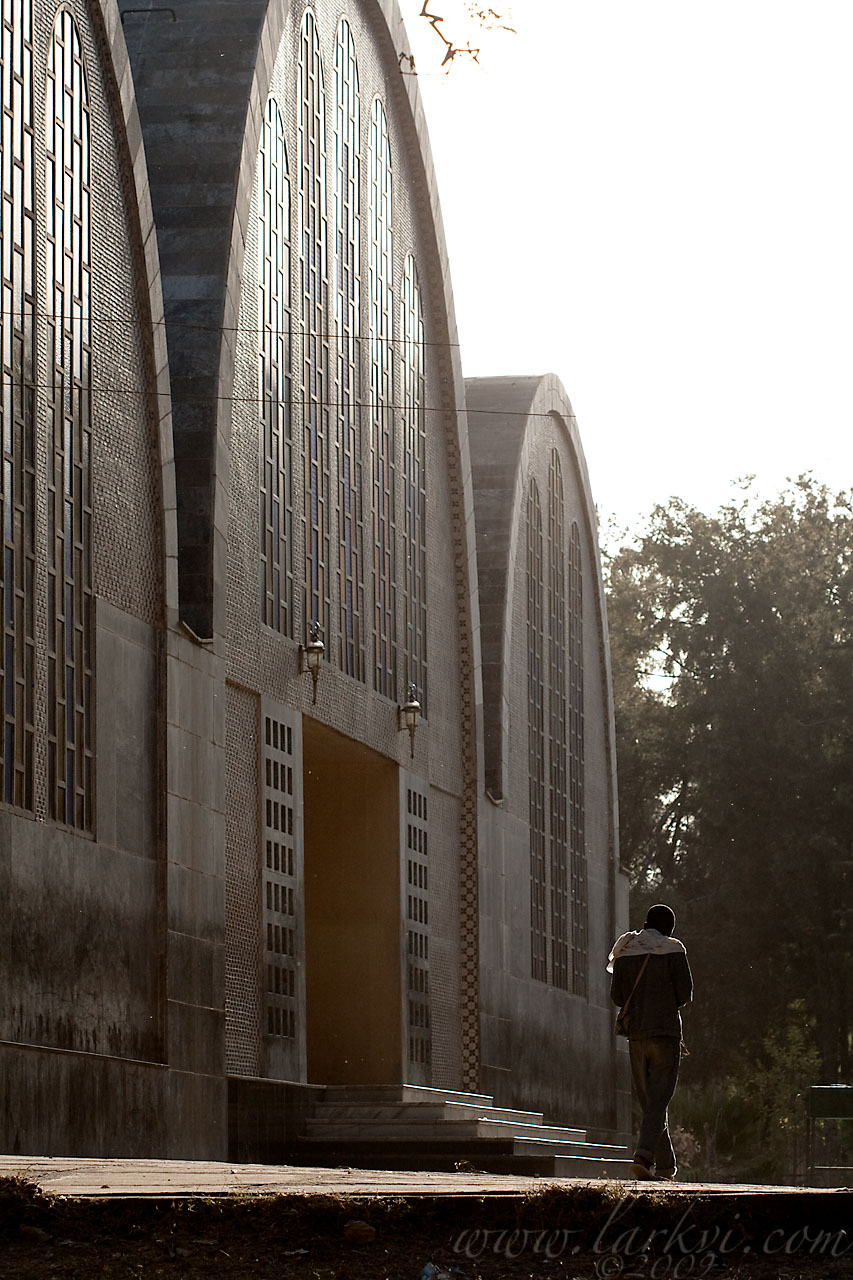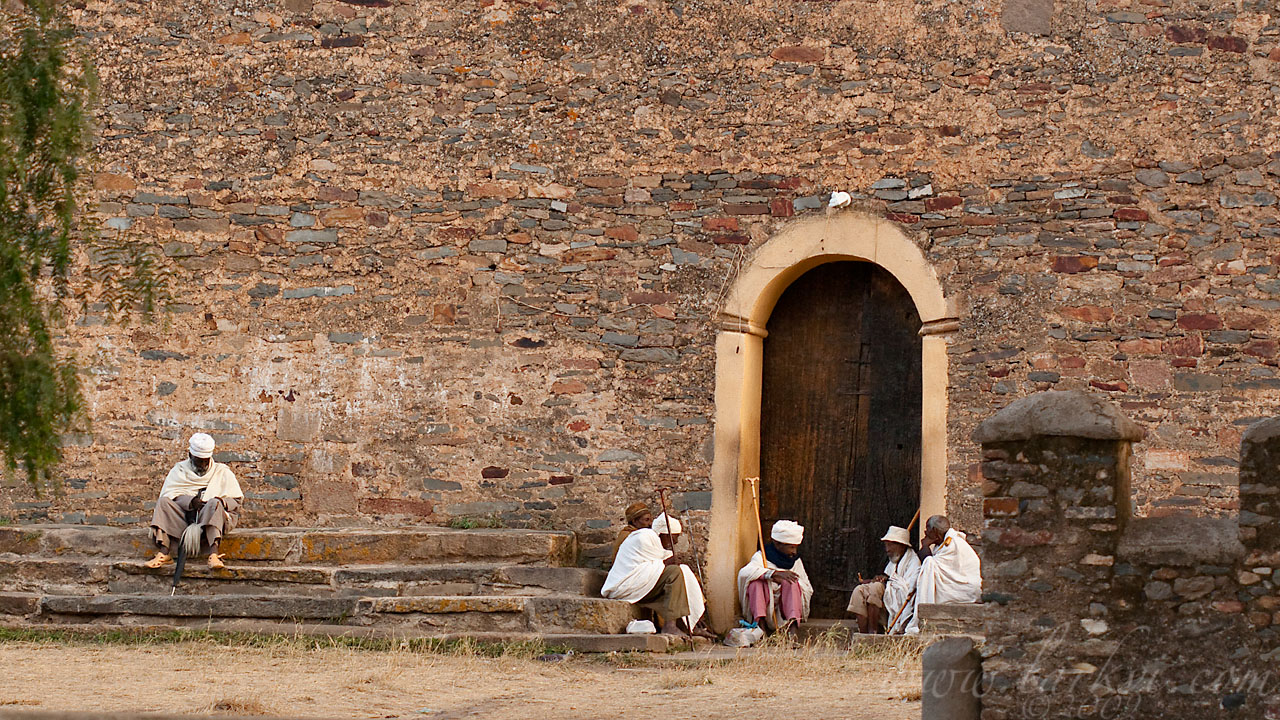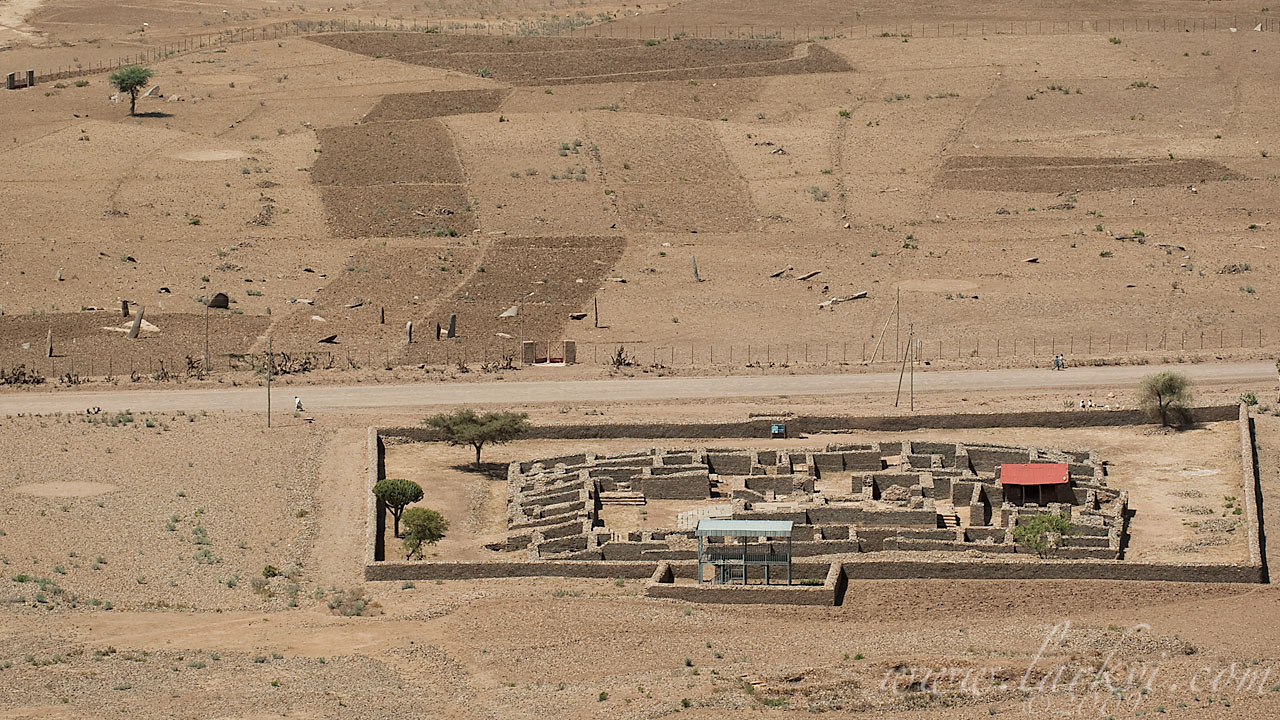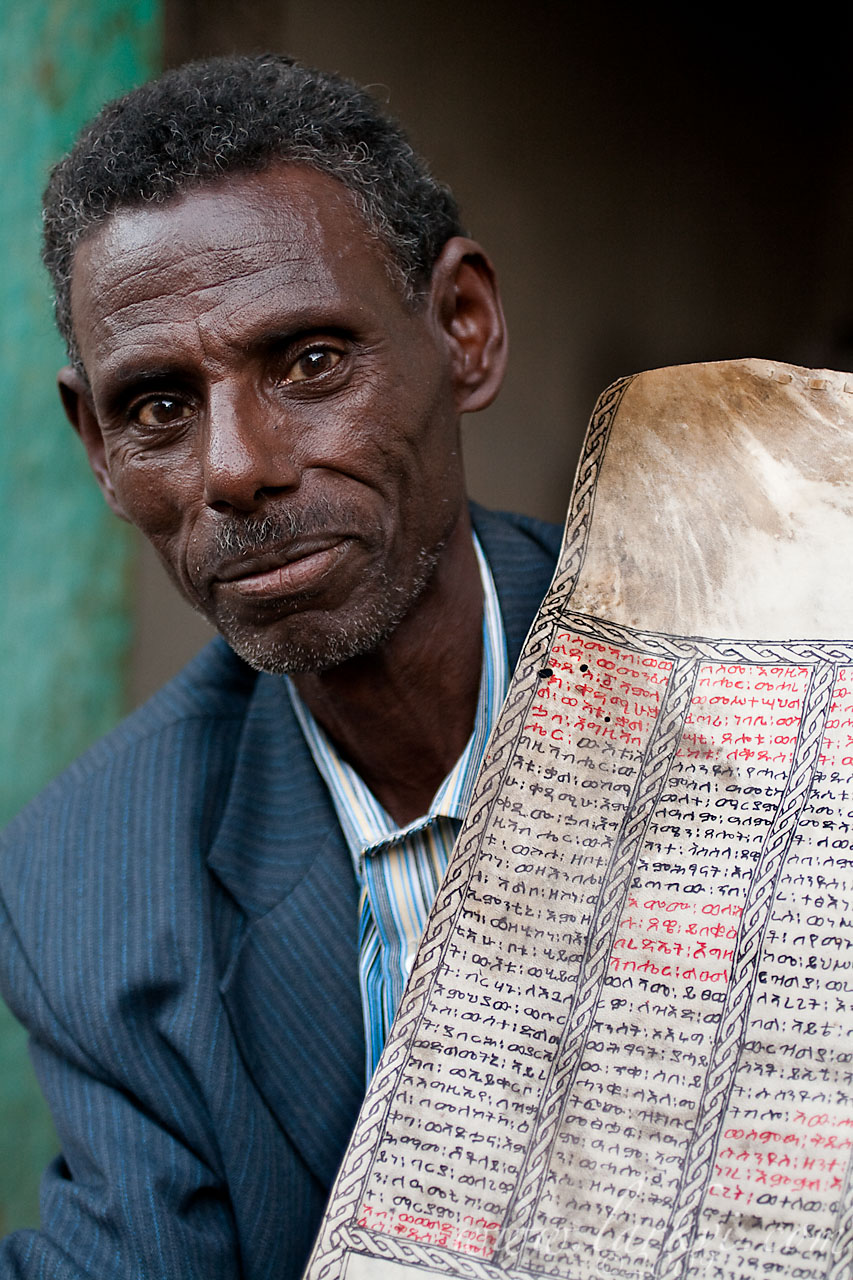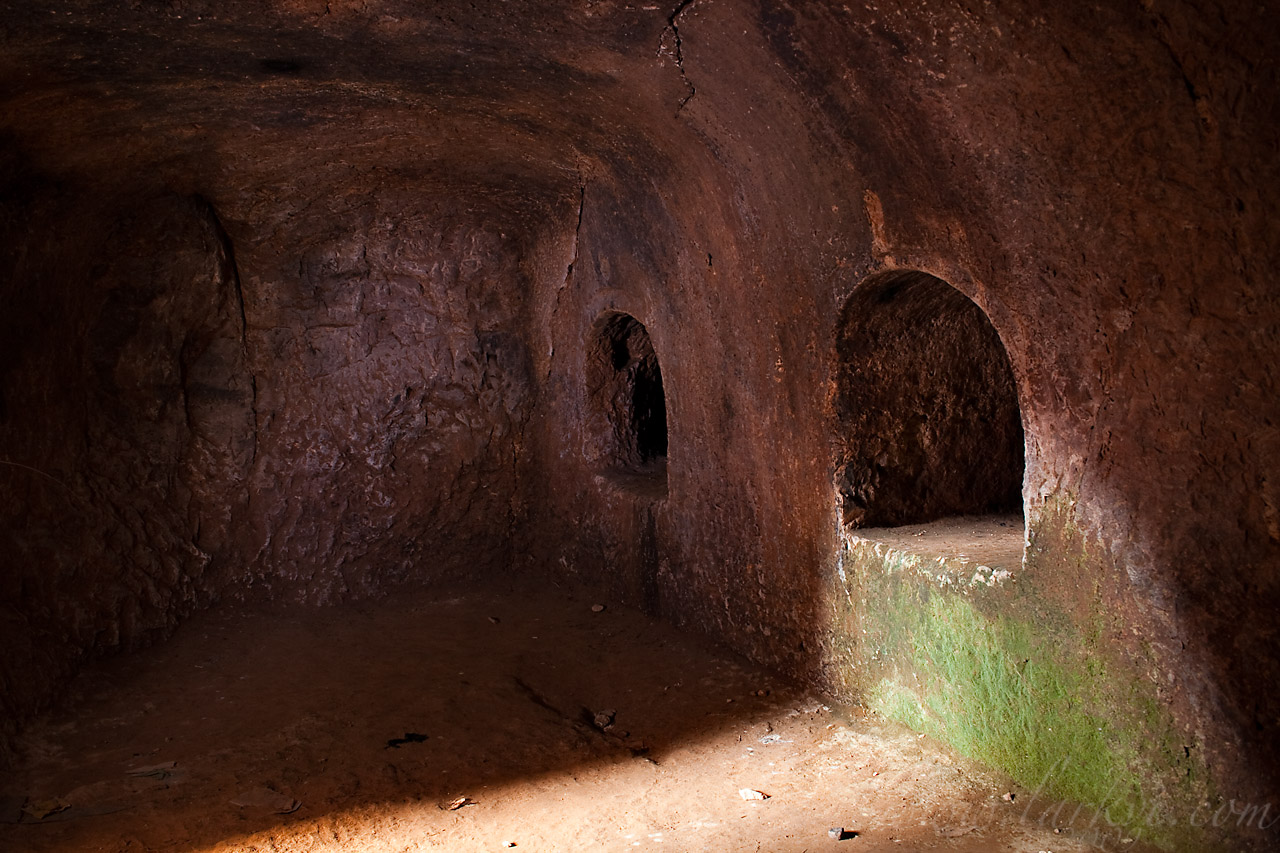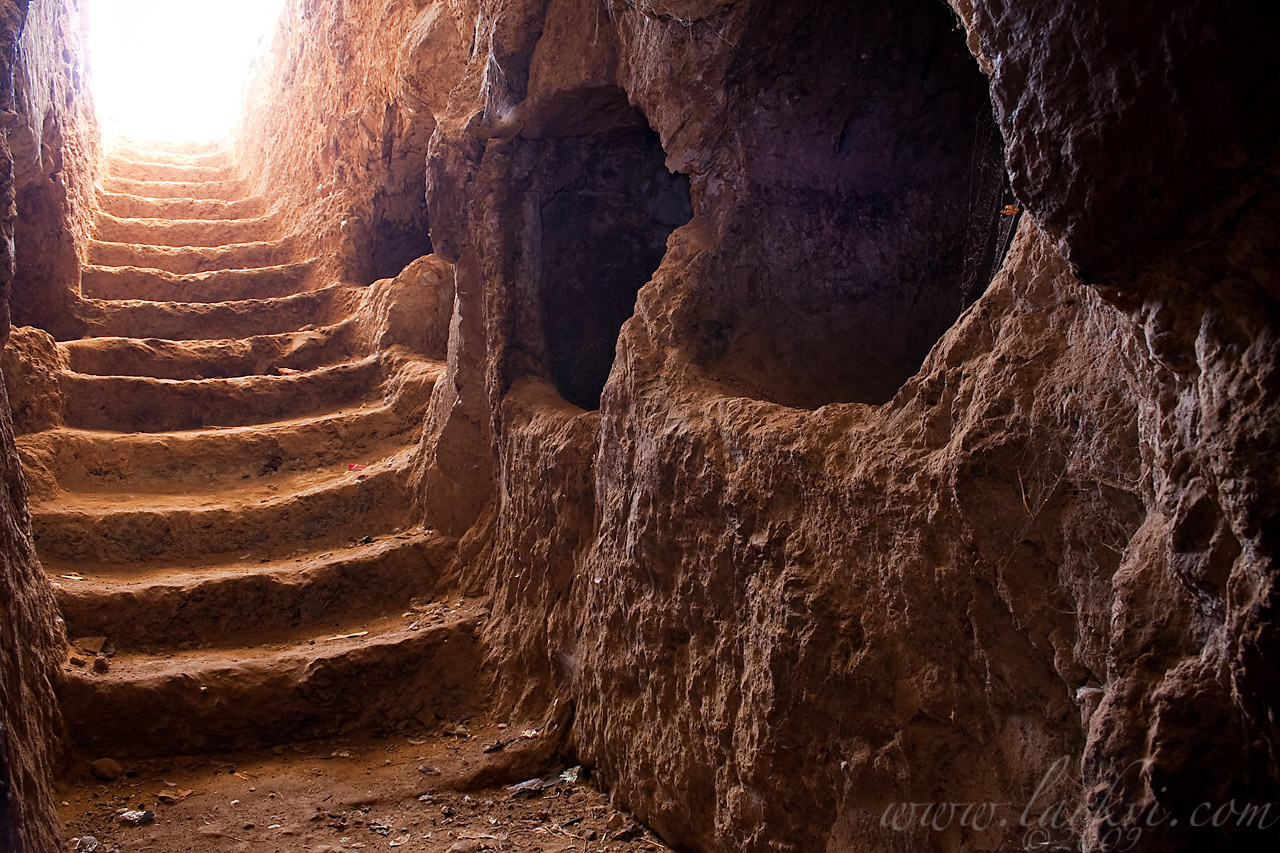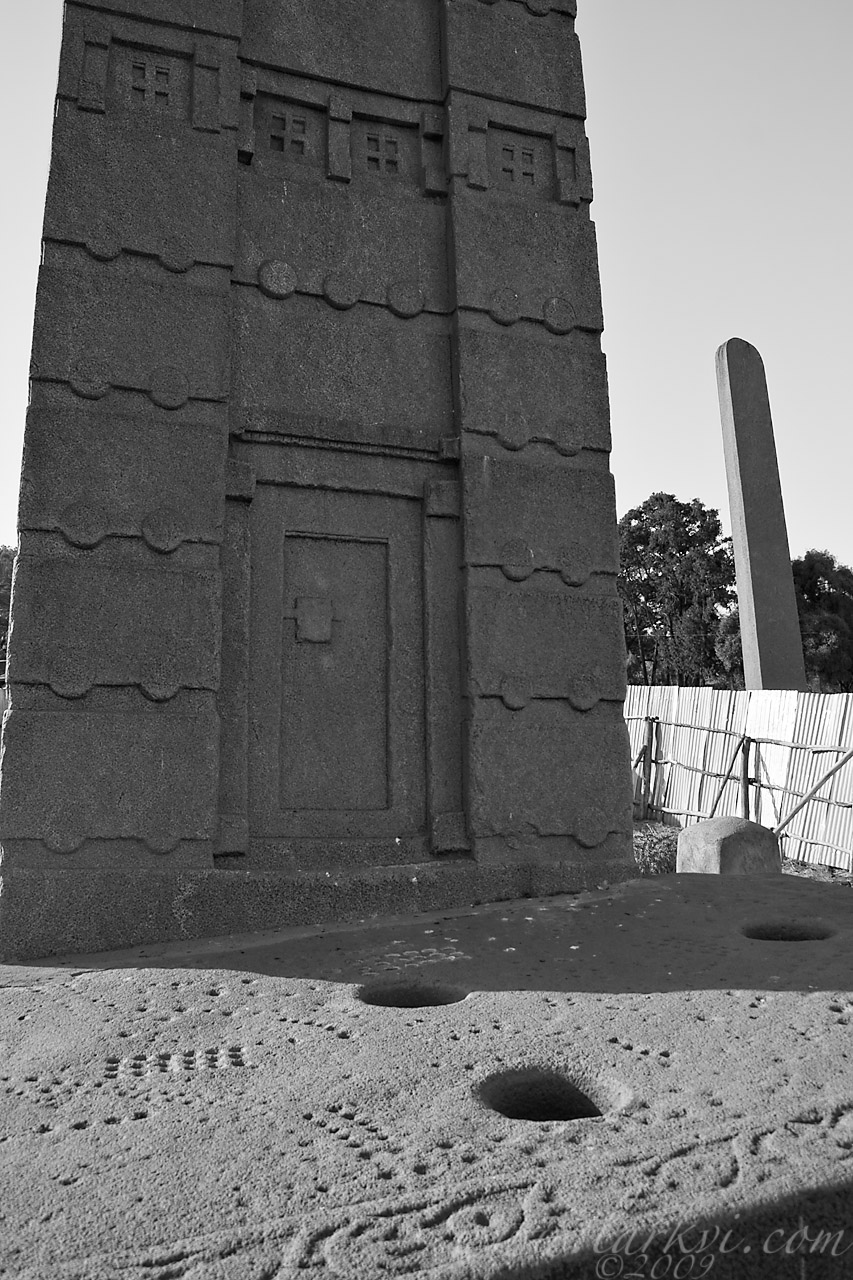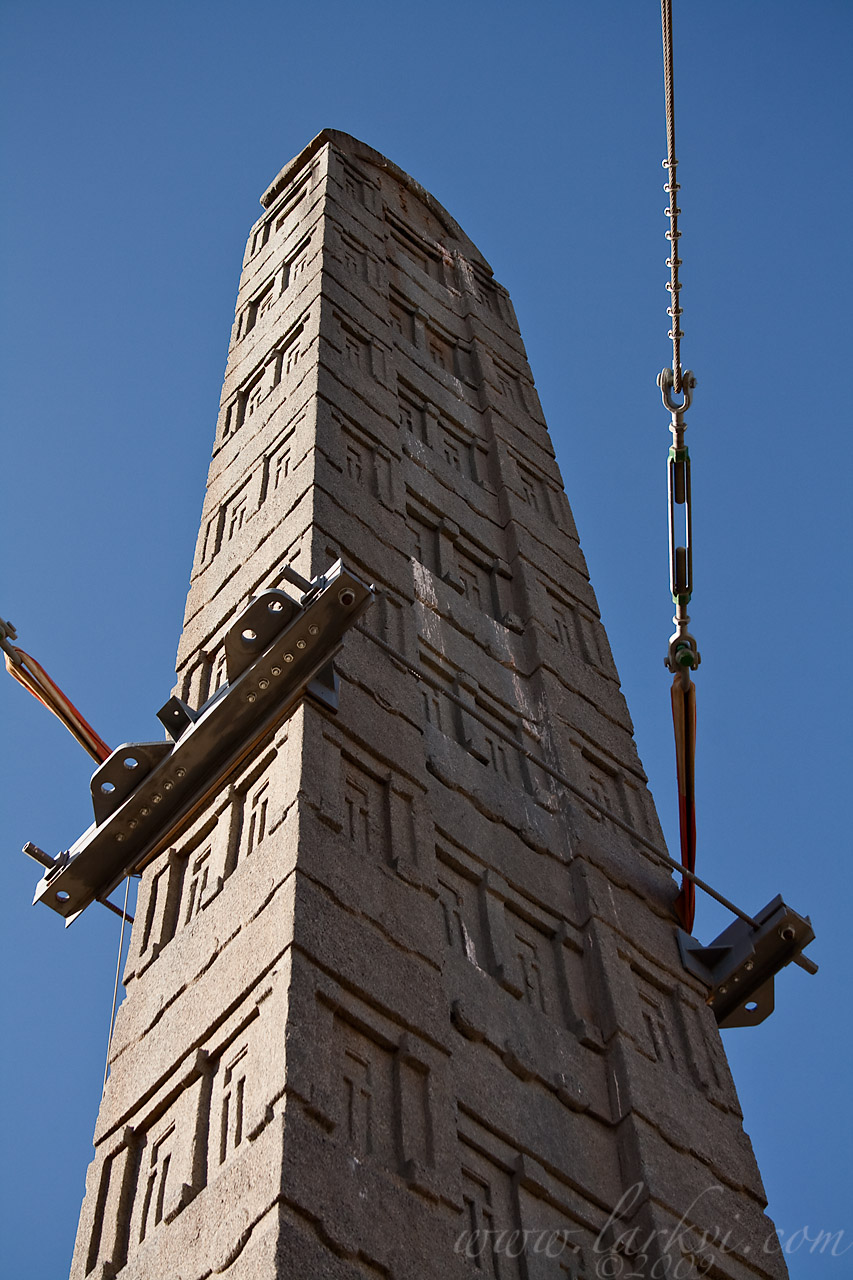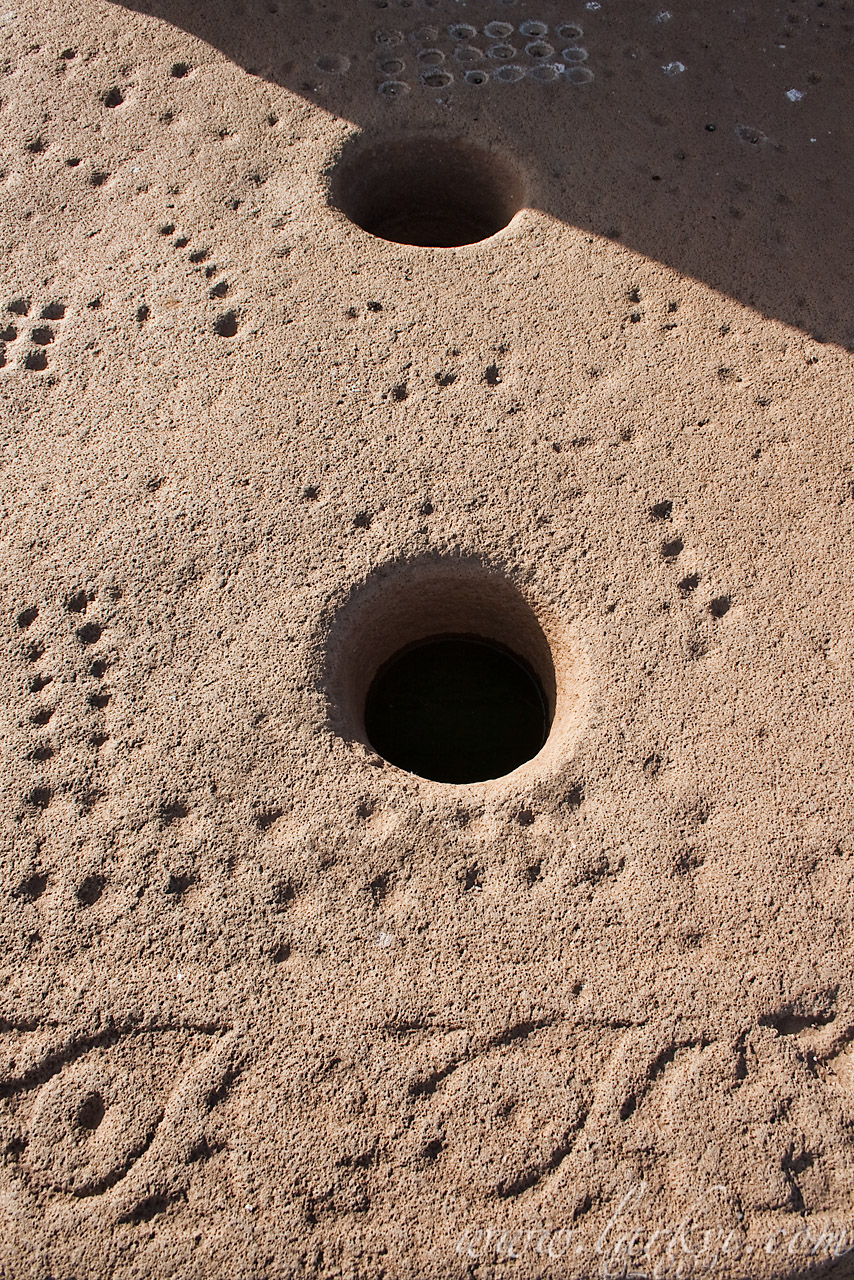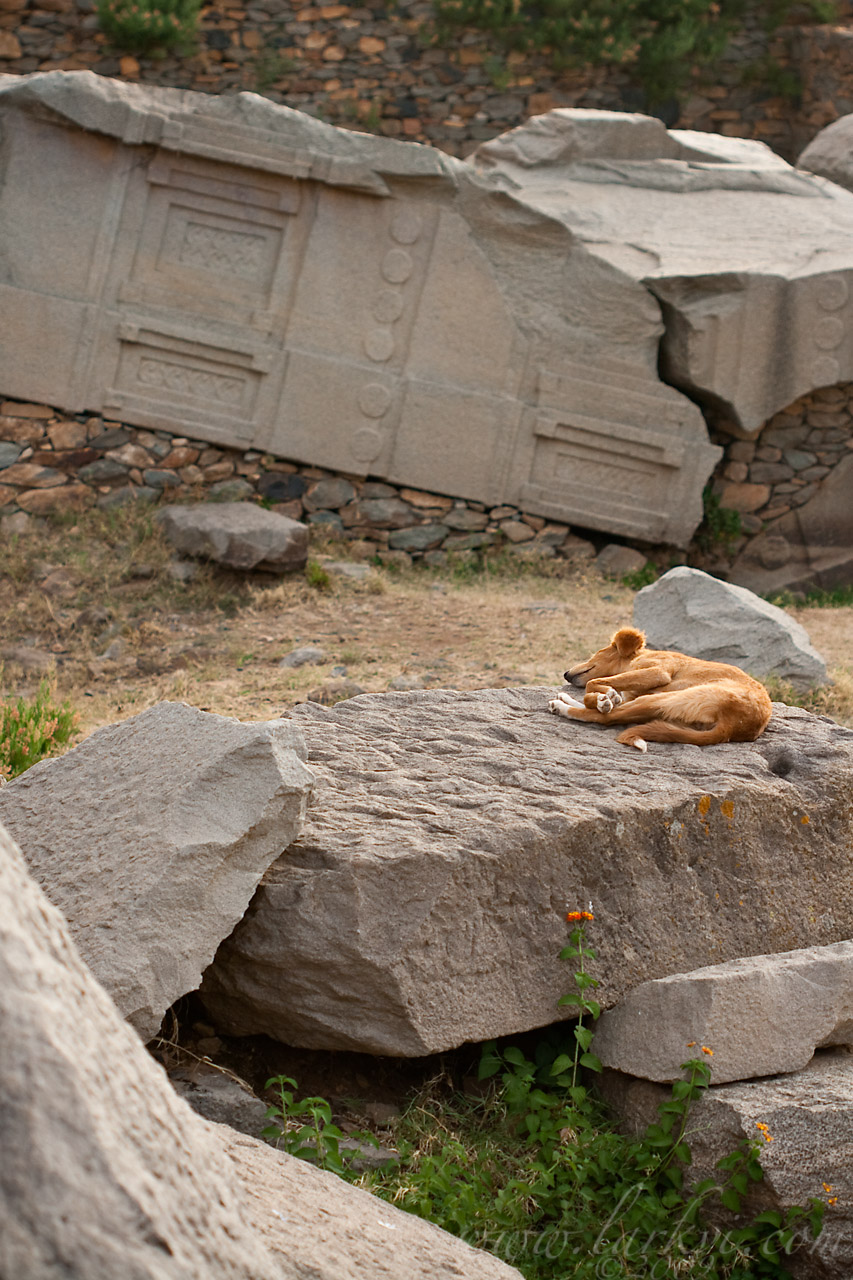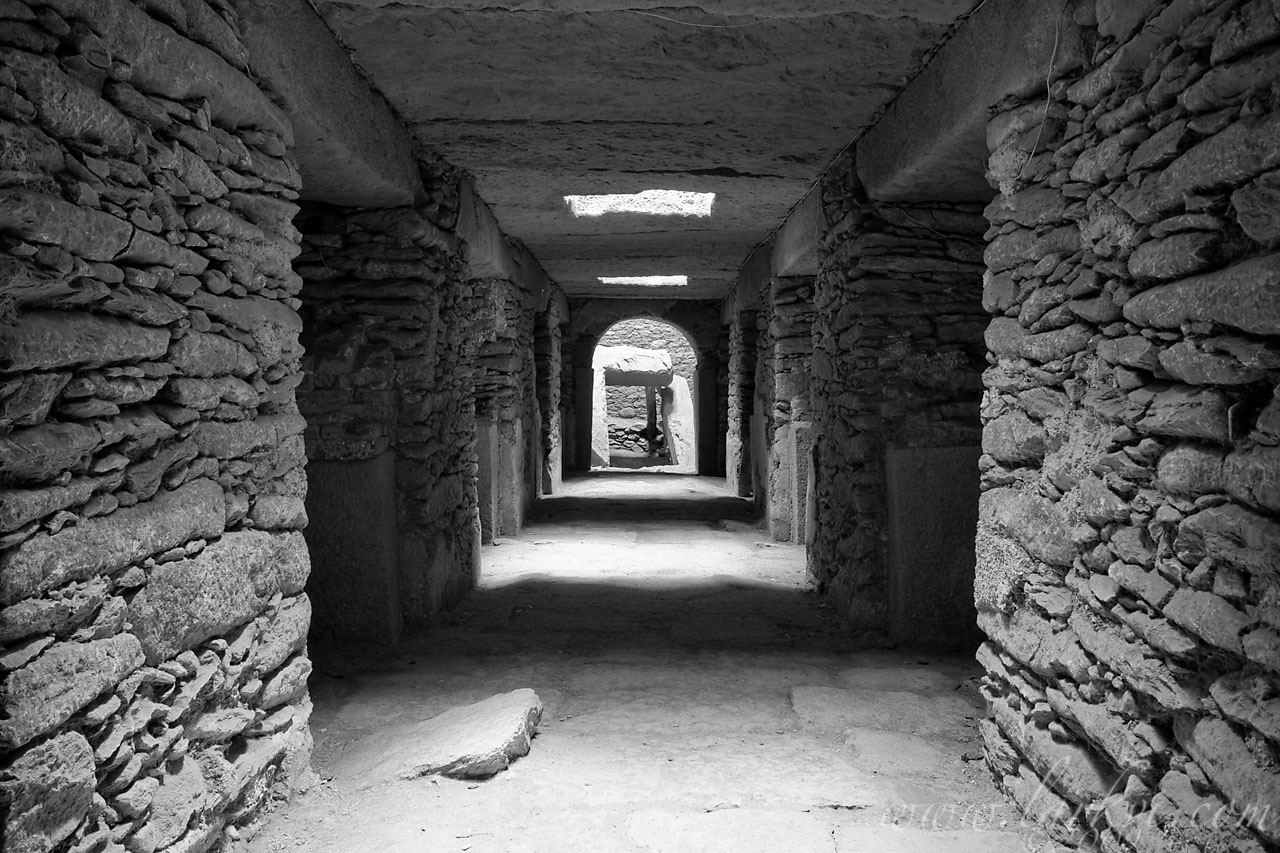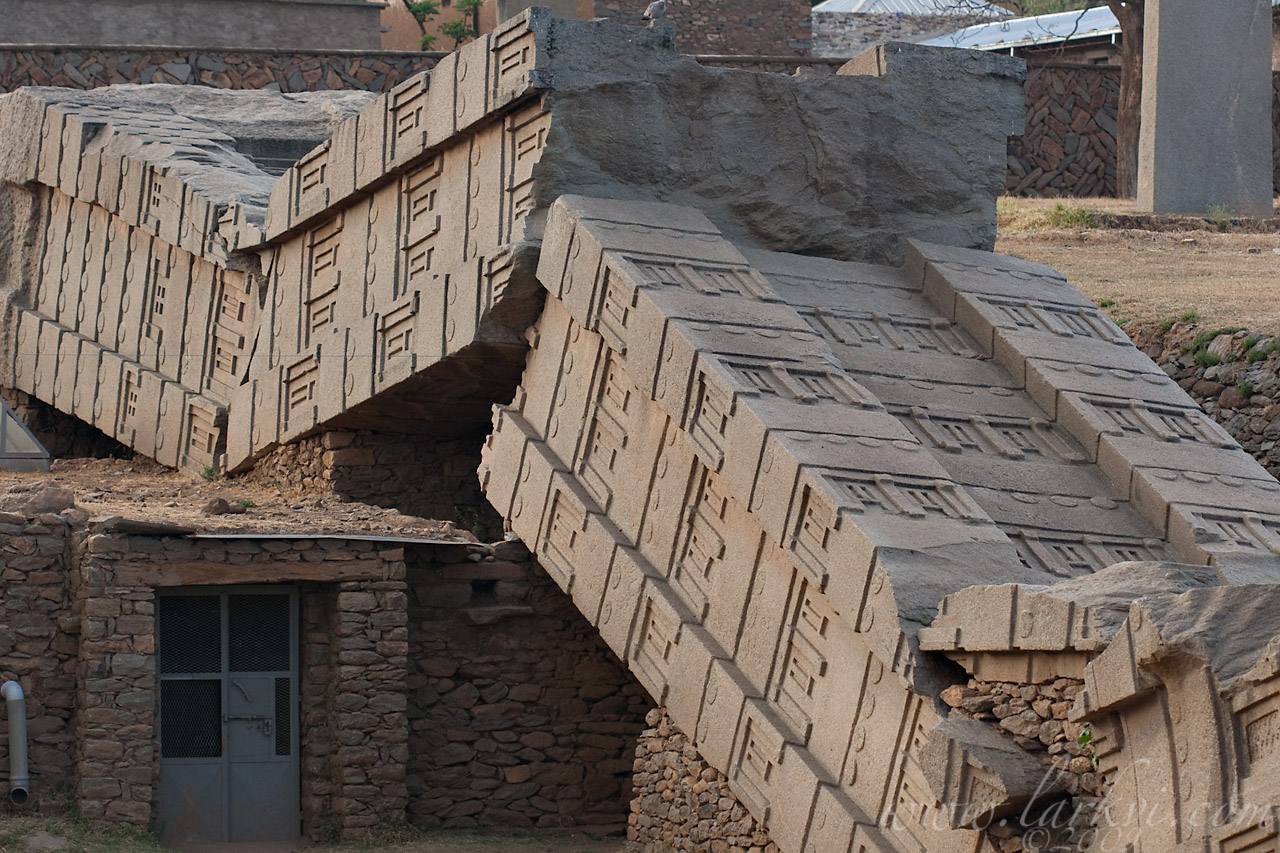
The remaining pieces of the fallen megalith.
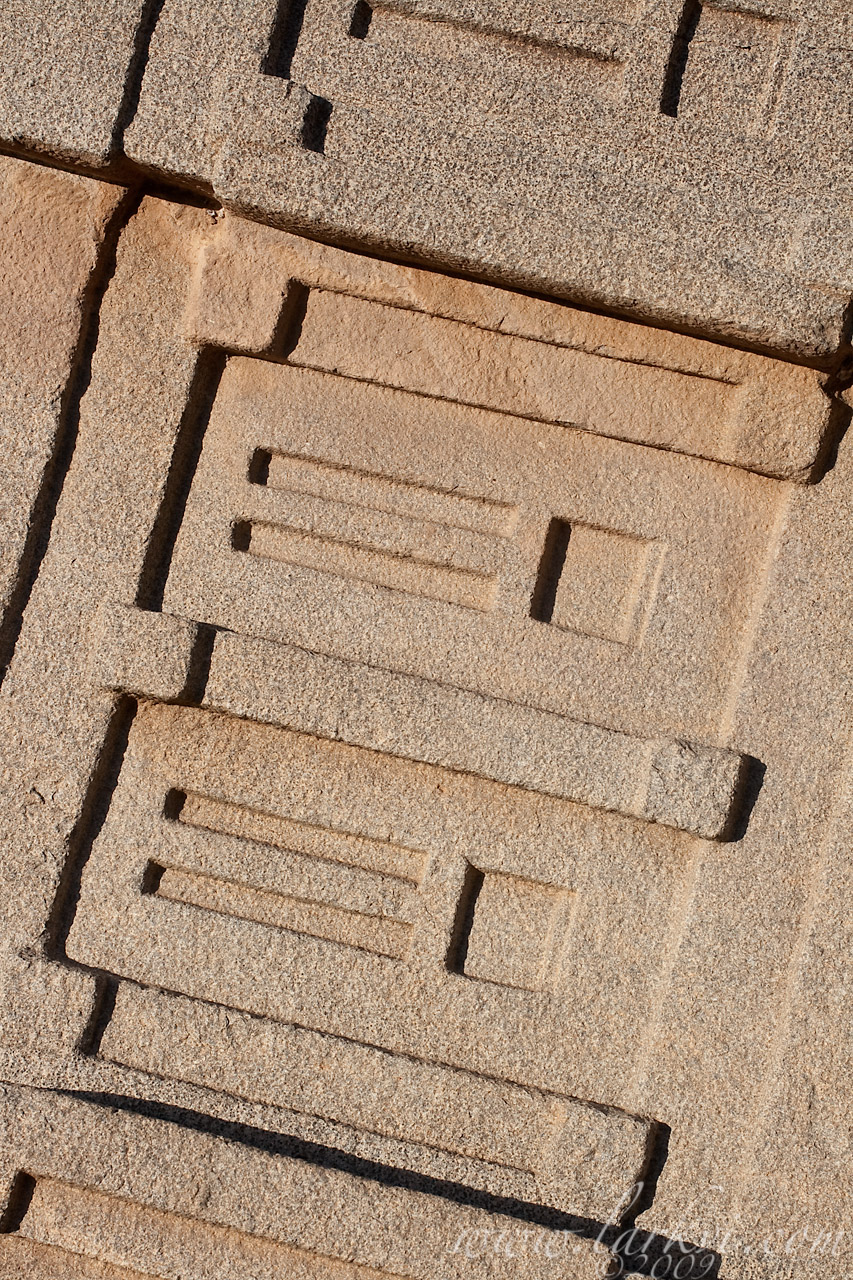
A detail of the carvings.
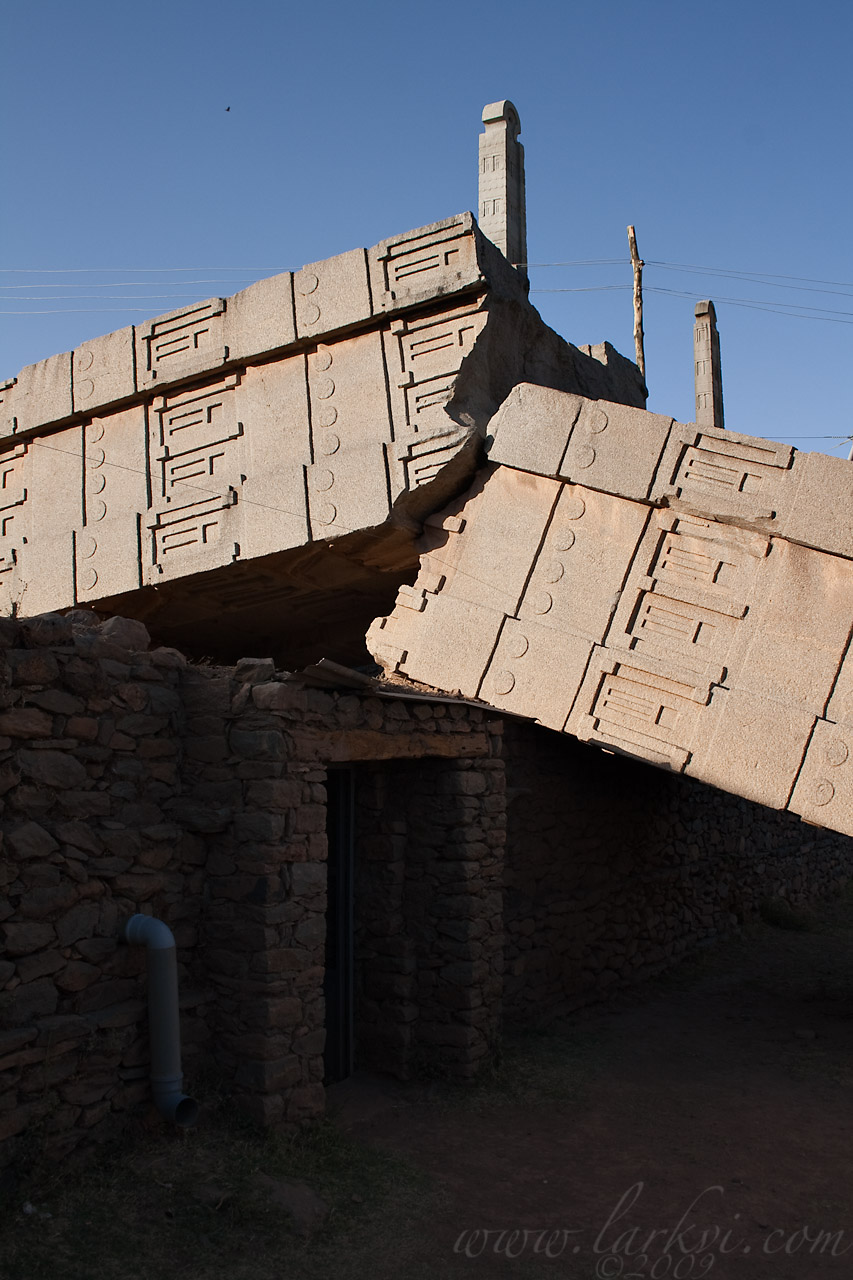
a view showing a large crack in the stela; the door is the modern entrance to the Mausoleum.
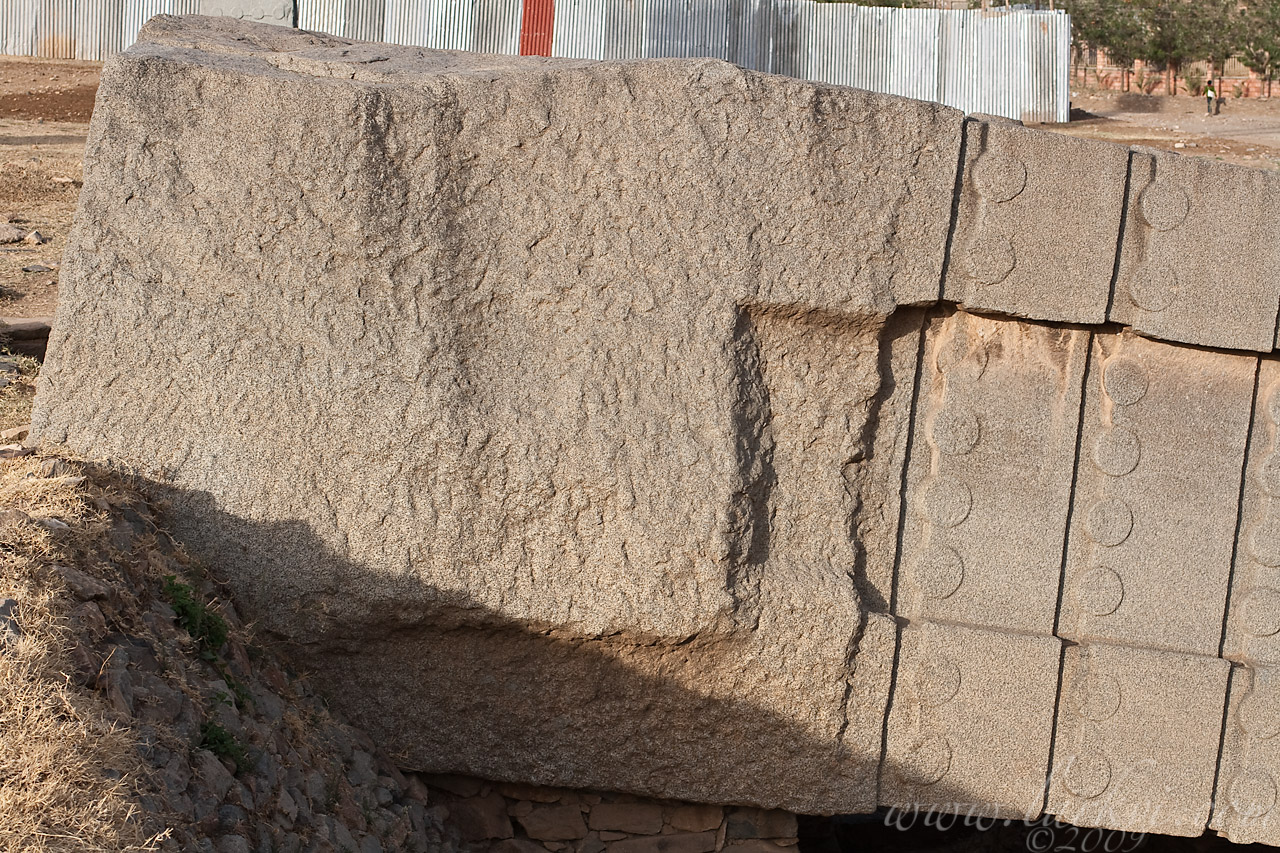
The unworked stone of the base. Given the size of the stela, the centre of gravity would have been much to high to be stable.
———-
Stela 1, the ‘Grand Stela,’ is the largest and most ornate stela ever made. Its creation marked the apogee of stela-craft; its failed erection and consequent destruction signaled the decline and abandonment of the same. Conceived, like stelae 2 and 3, as an Axumite palace, complete with false doors and representations of wooden beams, it marked two tomb structures, ‘The Mausoleum,’ a complex with ten side-chambers, and the ‘East Tomb,’ currently un-excavated and thought to be unfinished.
Though the collapse shattered the top of the stela, obscuring measurement, it is estimated to have been 32.6m long and massed 517 tonnes. Of the original length, only 8.5%/2.9m was meant to be underground; the monument would have had a high centre of gravity and was almost certainly unstable. Due to its calculated instability and lack of base-plates (the final stage of construction), among other factors, it is thought to have fallen upon erection, falling upon the unfinished Nefas Machaw tomb, shattering the stela and collapsing the tomb after breaking its massive stone supports. No ambitious stelae seem to have been attempted after the failure of Stela 1 in the mid-4th century, which also sees King Ezana’s conversion of the Axumite Empire to Christianity in 330; whether or not there is a causal relationship is a matter of speculation, but the spectacular failure of the most colossal monument of the old order, no doubt in front of all the residents of the ancient capital, must have been a thoroughly jarring experience. Some have even suggested that the monument was deliberately sabotaged in order to hasten conversion, but there is no evidence for this, and, as stated above, the monument was already likely to be highly unstable.
See Phillipson, David. Excavations in Aksum, Ethiopia: 1993-7. vol 1. London: The British Institute in East Africa 2000. pp. 157-224, 252-254.

